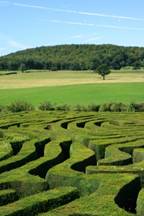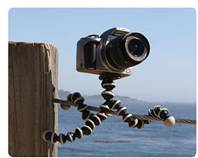Photography Hints and Tips
Have fun and experiment
 Put 10 camera owners in front of a scene and most of them will take exactly the same shot from the same position. Make your images stand out from the crowd by challenging yourself to find creative and fresh angles and perspectives to shoot from.
Put 10 camera owners in front of a scene and most of them will take exactly the same shot from the same position. Make your images stand out from the crowd by challenging yourself to find creative and fresh angles and perspectives to shoot from.
Many photographers get into the habit of always holding their camera the same way (horizontally/landscape or vertically/portrait). While it’s ok to have a preference one way or the other, it’s also worth remembering that changing the format can drastically change the impact of the shot.
Watch the Background
 The background can make or break a picture. It can add to the composition and help set the mood of a picture, or it can detract from the subject if it is cluttered. Watch out for backgrounds that are more compelling than the subject. Cluttered, distracting backgrounds often spoil otherwise good pictures. Before you press the shutter, stop for a minute and look at the background.
The background can make or break a picture. It can add to the composition and help set the mood of a picture, or it can detract from the subject if it is cluttered. Watch out for backgrounds that are more compelling than the subject. Cluttered, distracting backgrounds often spoil otherwise good pictures. Before you press the shutter, stop for a minute and look at the background.
Is there some obtrusive object or action in the background that does not relate directly to your subject which will divert the viewer’s attention? For example, is there a telephone pole growing out of your subject’s head? Beware of prominent horizontal or vertical lines, such as uncovered trellis, when you take informal portraits or group shops.
Foliage will make a better background. A blue sky is an excellent background, especially in colour pictures. Remember to look beyond your subject because your camera will!
Lighting Tips
 Some people are surprised to learn that cloudy, overcast days provide the best lighting for pictures of people. Bright sun makes people squint, and throws harsh shadows. On overcast days, the light is soft and flattering to faces.
Some people are surprised to learn that cloudy, overcast days provide the best lighting for pictures of people. Bright sun makes people squint, and throws harsh shadows. On overcast days, the light is soft and flattering to faces.
In the early morning and late evening the light can be quite spectacular and you can capture not only sunrises and sunsets, but also interesting effects on trees, buildings and faces.
Use the available light by placing the subject close to a window to capture natural light. Lighting a subject from the side is often more interesting than using the flash straight on. Try and avoid placing your subject directly under a window as the back light will cause extra shadows on their faces.
Flash Time
Use your flash when capturing portraits on a very bright day. While it may seem counterproductive, the flash will light your subject’s face and avoid the deep shadows that the overhead sun will cast on their face. Find the ‘fill-in’ flash mode on your camera - don’t just rely on your auto flash mode for more accurate shots. (If you are not sure where to find it, call in and we will be happy to show you.)
On the Move
When shooting a moving object, capture it as it comes towards you, as your camera can focus more easily this way. If an object is travelling across your field of vision, follow the movement with the camera as you capture the shot. The object will be in focus and the remainder of the background will be pleasantly blurry.
Using a tripod
A tripod is especially useful for any pictures which involve movement such as water or fireworks, or the available lighting is too low. A tripod will keep your camera a great deal steadier than a human hand, ensuring your photos will be sharper and clearer.
 The Gorillapod is the lightest and most versatile camera tripod available today. Because it has over two dozen flexible leg joints than bend and rotate, the Gorillapod will firmly secure your camera to virtually any surface. Available in three different sizes and many different colours, they are light, versatile and very useful!
The Gorillapod is the lightest and most versatile camera tripod available today. Because it has over two dozen flexible leg joints than bend and rotate, the Gorillapod will firmly secure your camera to virtually any surface. Available in three different sizes and many different colours, they are light, versatile and very useful!
Axe the Digital Zoom
Ask yourself – am I close enough? A common mistake is taking shots where your subject is too small. Shots that fill the frame with your subject tend to be much more dynamic and show a lot more detail.
 To get this effect, you have to either move closer, move your subject closer, or use your zoom. Of the two types of digital camera zoom, only Optical Zoom is a true zoom feature. If your camera offers digital zooming, which simply discards excess pixels without capturing any extra detail, disable it, so you use only optical zoom for better photos.
To get this effect, you have to either move closer, move your subject closer, or use your zoom. Of the two types of digital camera zoom, only Optical Zoom is a true zoom feature. If your camera offers digital zooming, which simply discards excess pixels without capturing any extra detail, disable it, so you use only optical zoom for better photos.
Get Down Low
 When photographing pets and children, get down to their level so you capture the child or animal face-on, rather than photographing the top of their head. If shooting from above, get a lot higher and get your subject to look up as you take the shot.
When photographing pets and children, get down to their level so you capture the child or animal face-on, rather than photographing the top of their head. If shooting from above, get a lot higher and get your subject to look up as you take the shot.
Practice, Practice, Practice
One of the wonderful things about digital cameras, is you can take as many photos as you like and simply delete the ones you don’t want to keep. So try and photograph something every day. Remember when you take pictures of the family, the first rule is don’t forget yourself. Make sure a friend or family member takes some pictures of you too!
Travel Checklist
Nothing is more frustrating than running around trying to find what you need, especially when you should be relaxing! So before you go on holiday, be sure you call in and stock up the necessities for your camera:-
- A tripod
- A spare memory card – or film!
- Spare batteries
- A list of photos you’d like to get!

